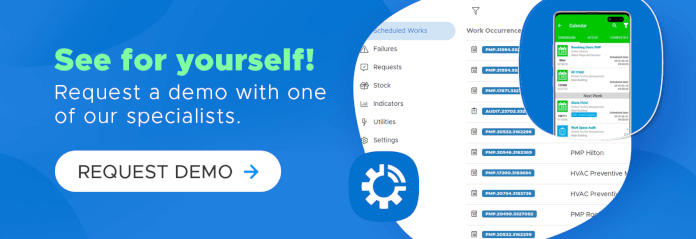In Europe, millions of euros are spent every year due to work-related accidents and illnesses. An EU-OSHA study of 5 European countries estimates that the costs range from 2.3% of GDP (in Finland) to 5% (in Poland). This is because accidents and illnesses have costs for the worker, the employer, and the state.
Therefore, having a safer workspace is essential not only to improve our well-being, but also to lessen the impact we have on society. With this in mind, we want to explore 5 ways in which an Intelligent Maintenance Management Platform (IMMP) can contribute to safer workspaces.
A more proactive approach
There is a Portuguese proverb that says, “Apologies are to be avoided”. Well, the same thing happens with breakdowns: they are preferably avoided. But if with apologies we cannot give tips, with breakdowns it is another story.
In maintenance, breakdowns are avoided with a proactive approach. You can insist on prevention (preventive maintenance), try to predict when breakdowns will happen (predictive maintenance), or monitor the condition through different techniques. Any of these options is preferable to reactive maintenance!
With an IMMP, you can plan annual services, cyclical services (which repeat themselves with a certain frequency), and special services, which you only need to perform once. This makes it easier not to forget anything, to organise the annual maintenance plan, and to increase the reliability of the assets.
In case you prefer condition monitoring, you can also integrate your platform with other software and concentrate all the information you receive from the sensors in one place. By doing so, it is easier to filter all the data and control everything that is happening in each building.
Link checklists to work orders
“To err is human” is another apt expression, especially when working under pressure and in a hurry. The good news is that there are several ways to prevent human error in maintenance. And some are quite simple and easy steps to implement in your work routines.
For example, we know that having a written procedure reduces the likelihood of making a mistake to 5%. When that procedure is associated with a checklist, the probability drops even further, to 1%. Therefore, our Gatekeeper app allows you to associate a checklist with each job.
Before starting, the technician has to answer a series of questions (for example, “is the machine unplugged?”, “are there barriers preventing passage?”, “am I wearing suitable protective gear?”). This ensures the safety of both the technician and those around him.
Always on time
Unfortunately, not all popular expressions are true… like “better late than never”. In maintenance, “late” is a safety risk. So, it’s important to keep an eye on all deadlines and not miss any. And, with an IMMP, you don’t need to take memory supplements!
With an intelligent maintenance management platform, you can set up an SLA and the deadlines you have to meet. This means you don’t miss lift inspection, fire extinguisher expiration date, periodic cleaning of condensation trays, and other sensitive deadlines.
Thanks to such notifications, IMMP goes beyond maintenance planning. In other words, it promotes the execution of the plan and compliance. Finally, we remind you that you can perform automatic audits to reveal non-conformities and generate new work orders to correct them.
More data, better decisions
Back to the real premise? “Information is power”. So, collecting more data about what’s going on in your facility is another plus of an IMMP. What recurring malfunctions could pose a safety risk? Which carbon monoxide or smoke alarms go off most often?
In addition, the information you collect from motion, temperature, and humidity sensors, and HVAC usage, among other data, is valuable to optimise energy usage and achieve more ergonomic space. At the same time, you can adjust all these variables to the occupants’ preferences.
However, it is recommended to complement this information with feedback from technicians and employees. Staff can alert you to risks that you missed in the audit, such as wobbly steps, shaky escalators, slippery floors, and other details that could put the user at risk.
Finally, it is interesting to be able to track the life cycle of assets through the platform. Everything has its cycle: the roofs, the coatings, the mechanical parts of the lift, the heating systems, and so on. With the data you collect over time, you can decide whether to repair or replace a piece of equipment.
Improving your response
After a breakdown, the worst thing that can happen is to not be up to the challenge. As they say in English, “the cure is worse than the disease” (yes, we have an expression for everything). The maintenance team must be quick to act and have defined protocols to guarantee the safety of the space.
In this aspect, an intelligent platform is important because communication with the users of the space is more fluid. It is possible to report a malfunction on the platform and generate a service request. Then, the platform itself looks for the most qualified technician with availability and sends him the notification.
Reacting quickly is the best way to contain damage and return to normal operation without additional security risks. For assets with greater criticality, there must be defined protocols (all documentation must be available for consultation on the platform, effortlessly).


